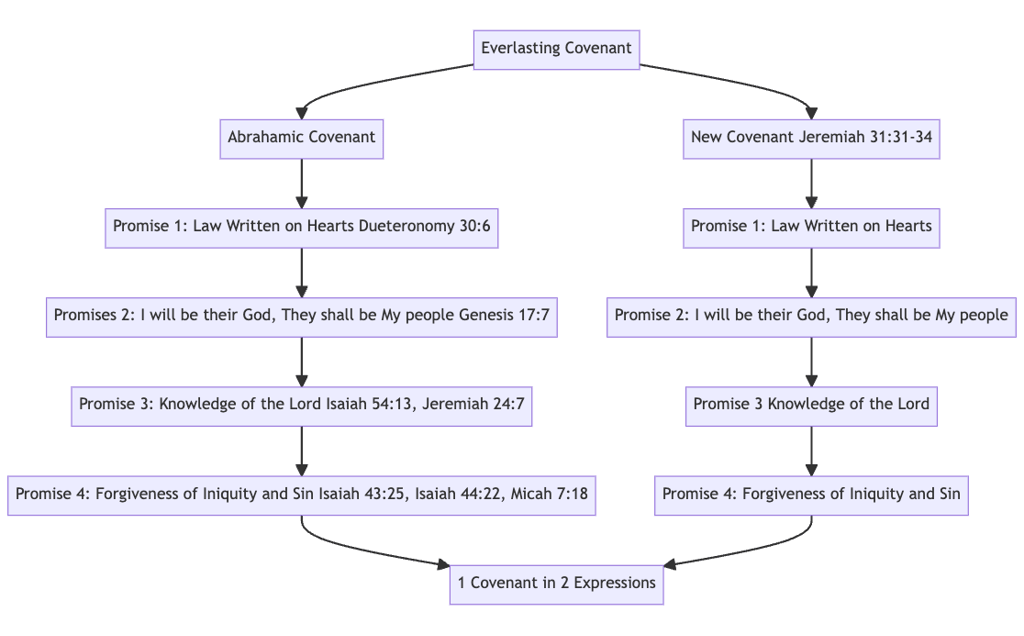The Everlasting Covenant
Through a deep exploration of biblical narratives, this article showcases God's unchanging promise of redemption, emphasizing the continuity of His redemptive plan across generations.
THEOLOGICAL ARTICLES
Justin Hoke
10/3/20232 min read


In this short article I will attempt to illuminate the nature and significance of the Everlasting Covenant, its initial manifestation in the Abrahamic Covenant, and its renewed expression in the New Covenant, laying the groundwork for understanding the continuity of God's redemptive plan.
Definition and Explanation of the Everlasting Covenant
The concept of an Everlasting Covenant underscores the unchanging, eternal commitment of God towards His people. It's an overarching theme that traverses through the biblical narrative, demonstrating the faithful and steadfast love of God. The Everlasting Covenant is God's promise to redeem and restore humanity, a promise first whispered in the aftermath of the fall in Genesis 3:15, and gradually unfolded throughout the biblical narrative.
Discussion on the Abrahamic Covenant and its Promises
The Abrahamic Covenant, established in Genesis 17:7, is a profound manifestation of the Everlasting Covenant. God promises Abraham that He would be his God and the God of his descendants, initiating a relationship that transcends generations. The covenant encompasses promises of land, numerous descendants, and most significantly, the promise of blessings to all nations through Abraham's seed, which the New Testament reveals as Christ (Galatians 3:16).
Comparison of the Abrahamic Covenant and the New Covenant with Scriptural References
The New Covenant, prophesied in Jeremiah 31:31-34, bears remarkable resemblance to the Abrahamic Covenant. Both covenants underscore the intimate relationship God desires with His people: "I will be their God, and they shall be My people." They share the promise of inward transformation - the Law inscribed on hearts, ensuring a profound, inward obedience to God, a promise echoed in Deuteronomy 30:6 and Ezekiel 36:26-27.
The New Covenant, however, is often described as “better” or “new” because it fulfills and brings to fruition the promises of the Abrahamic Covenant. While the Abrahamic Covenant pointed forward to the redemptive work of Christ, the New Covenant is the realization of that work. It's inaugurated by the blood of Christ, establishing a new basis for the relationship between God and His people, grounded in the finished work of Christ on the cross.
It's noteworthy to mention that the Mosaic Covenant, with its demand for perfect obedience, serves as a tutor leading to Christ (Galatians 3:24). It reveals the need for a Savior, marking a critical phase in the unfolding plan of God yet stands in contrast to the unconditionality of the promises in the Abrahamic and New Covenants. The Mosaic Covenant underscores the inability of humans to attain righteousness through the Law, thus accentuating the grace extended through the Abrahamic and New Covenants.
In conclusion, examining the Abrahamic and New Covenants through the lens of the Everlasting Covenant illuminates the unbroken thread of God’s redemptive narrative. It sets a firm theological foundation for understanding the practice of infant baptism, which, as subsequent chapters will elaborate, is deeply rooted in the covenantal relationship God has nurtured with His people from the dawn of creation. This perspective enriches our comprehension of God’s unwavering commitment to redeem His people and the holistic nature of His covenant promises, which encompass not just individuals, but families and communities across generations.
